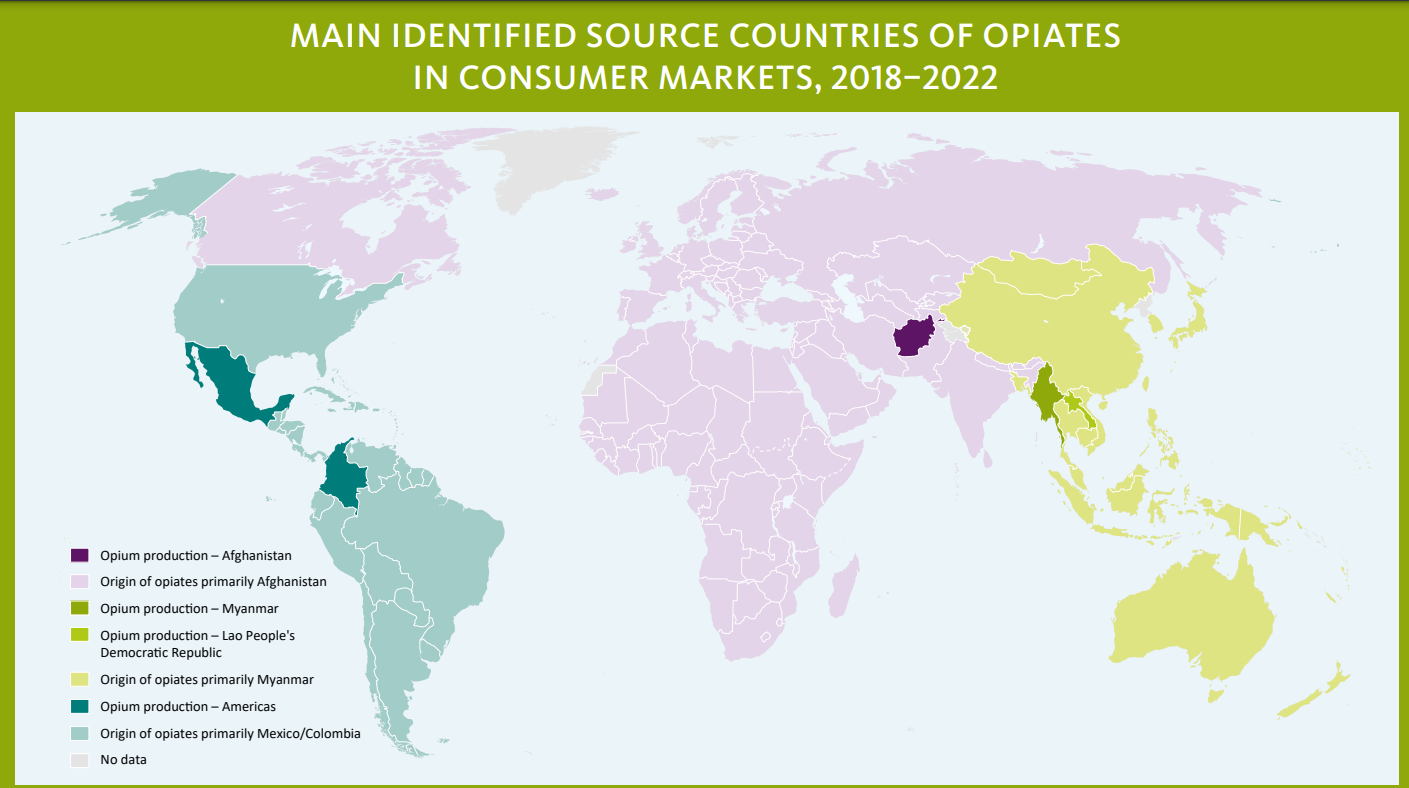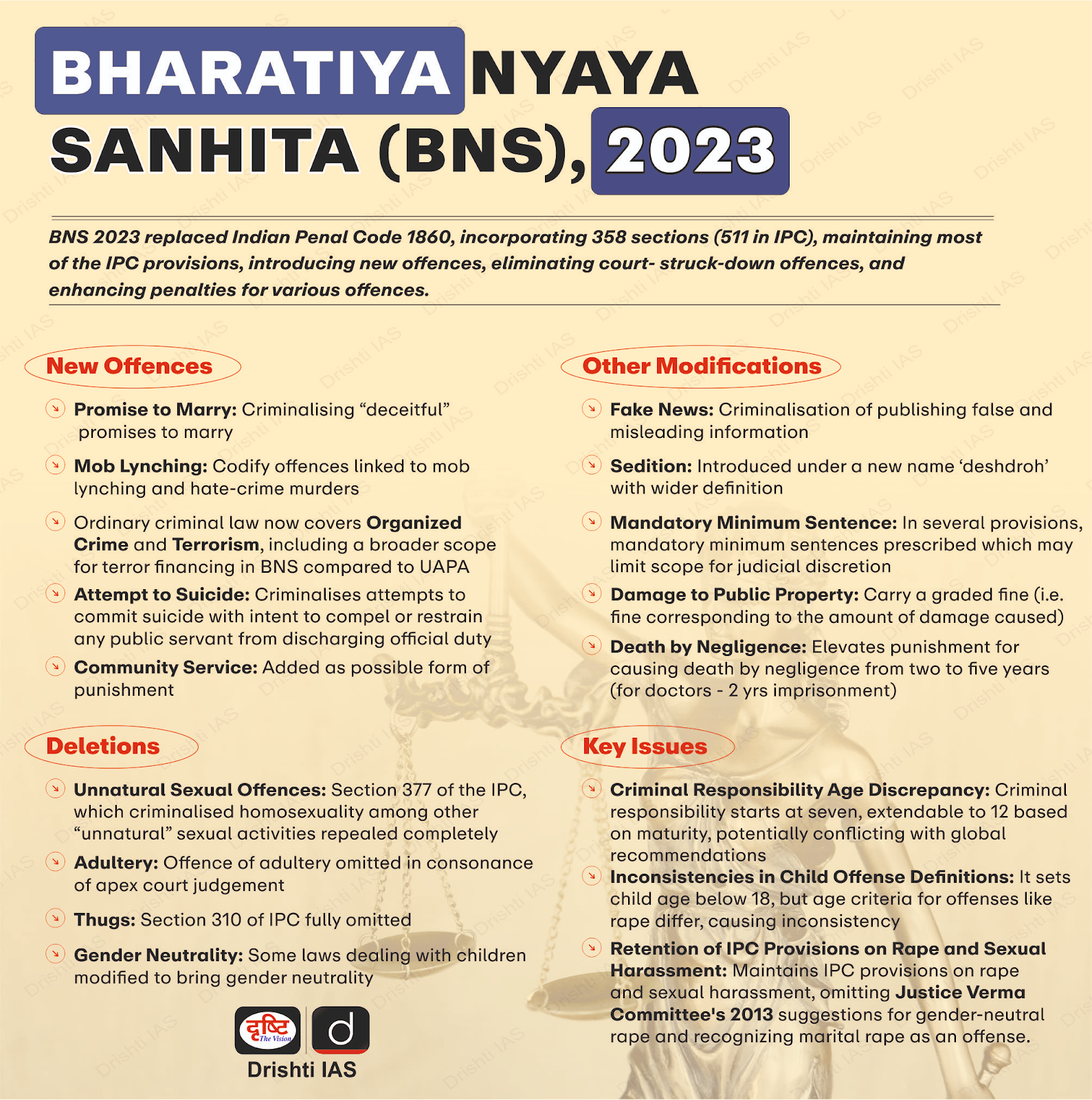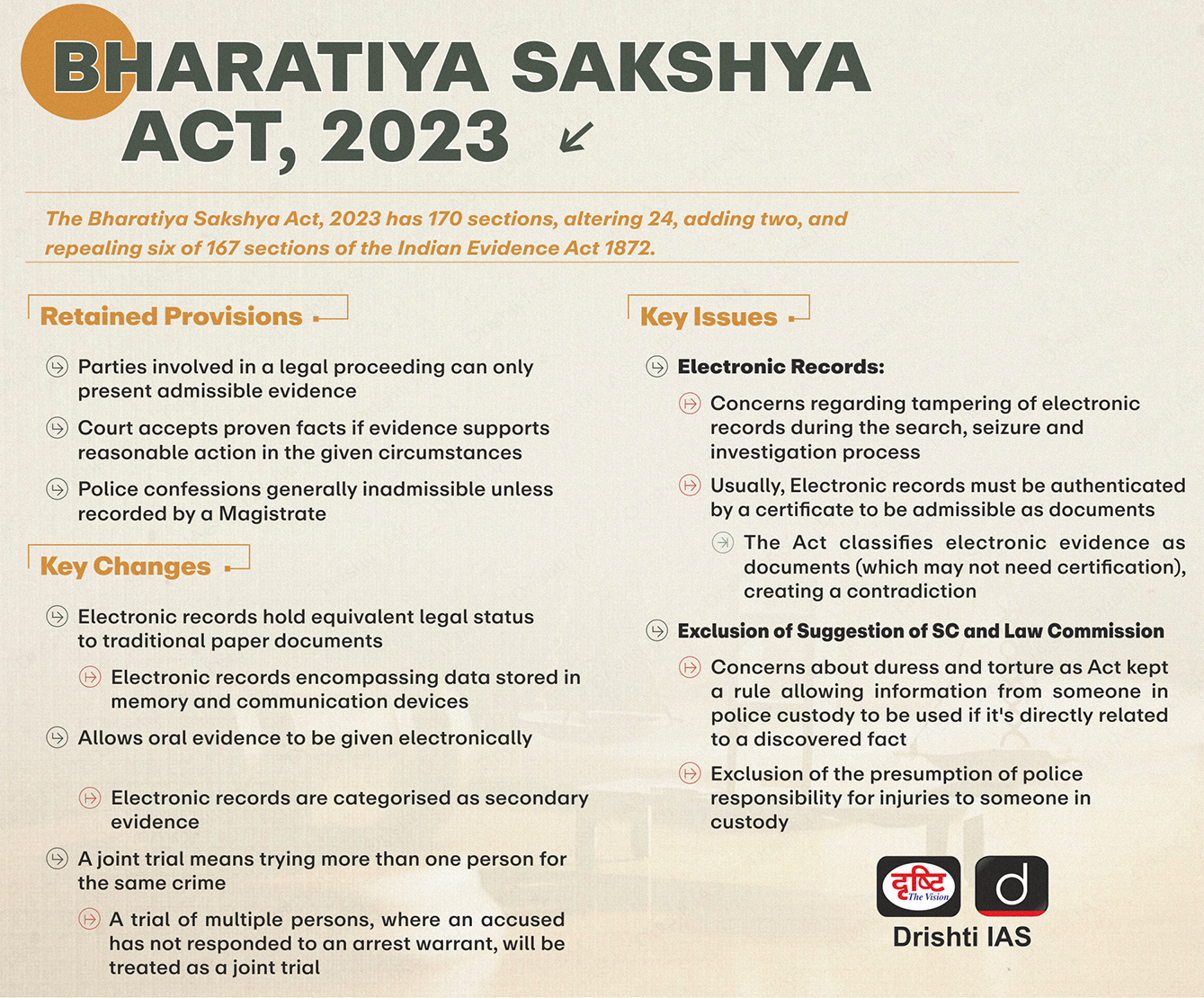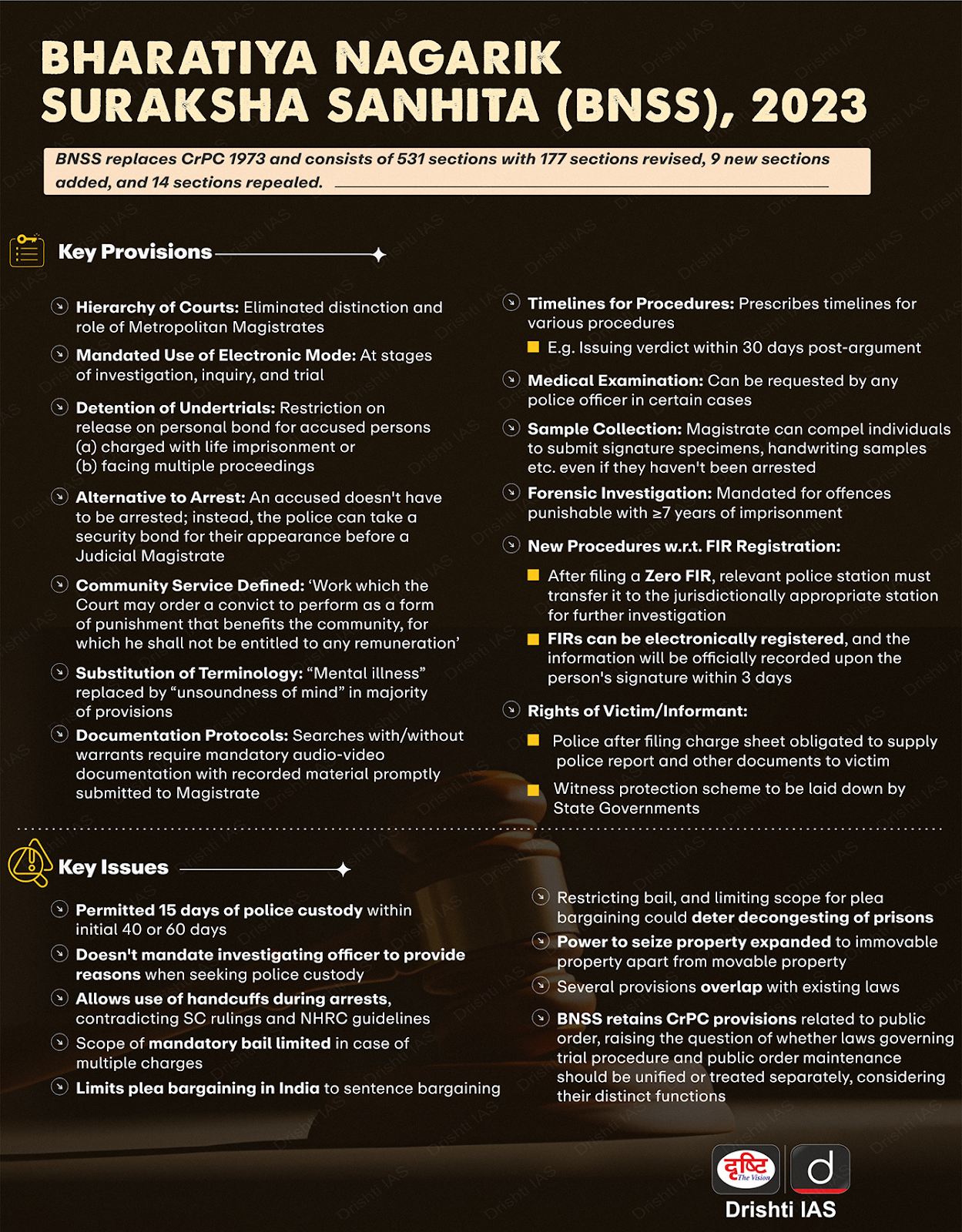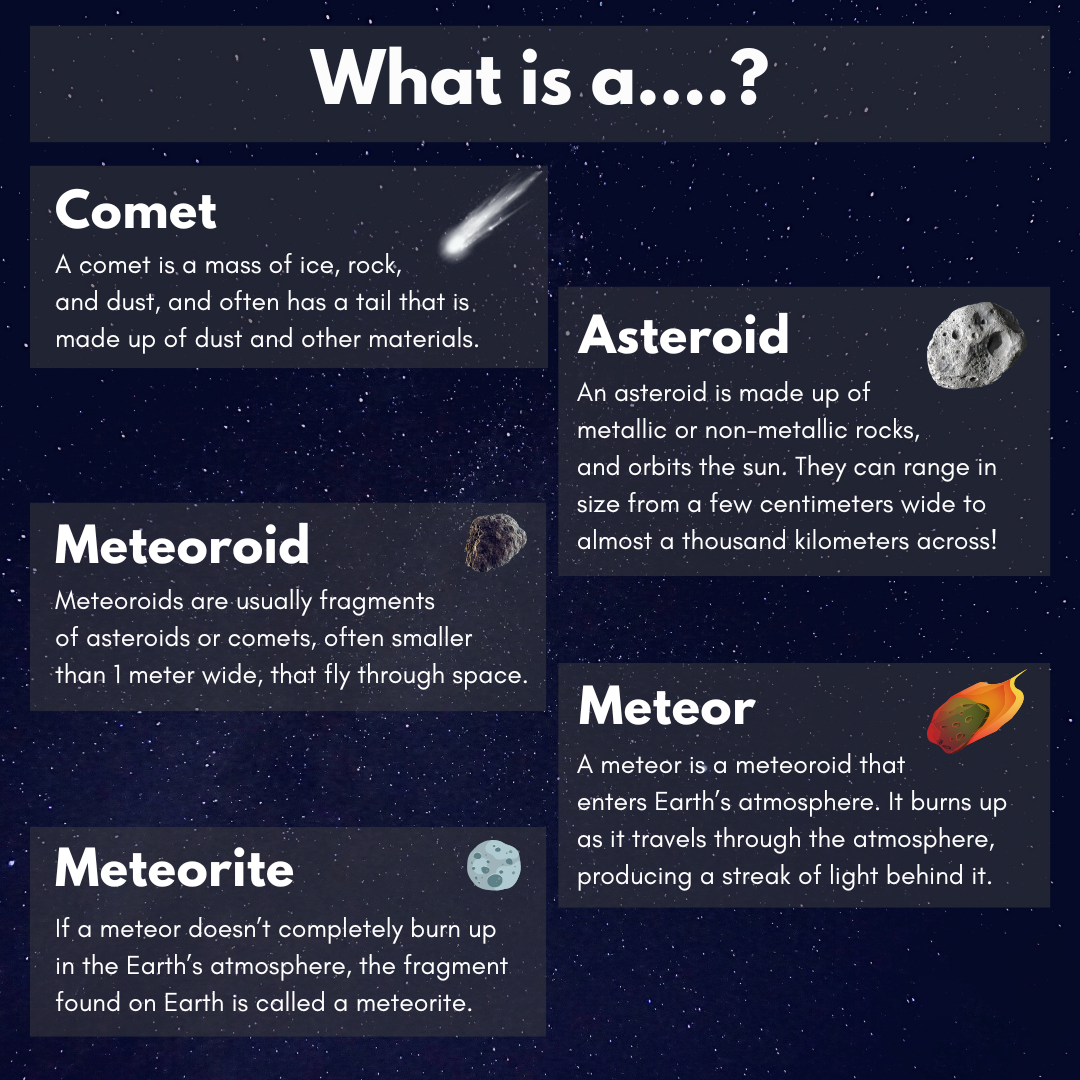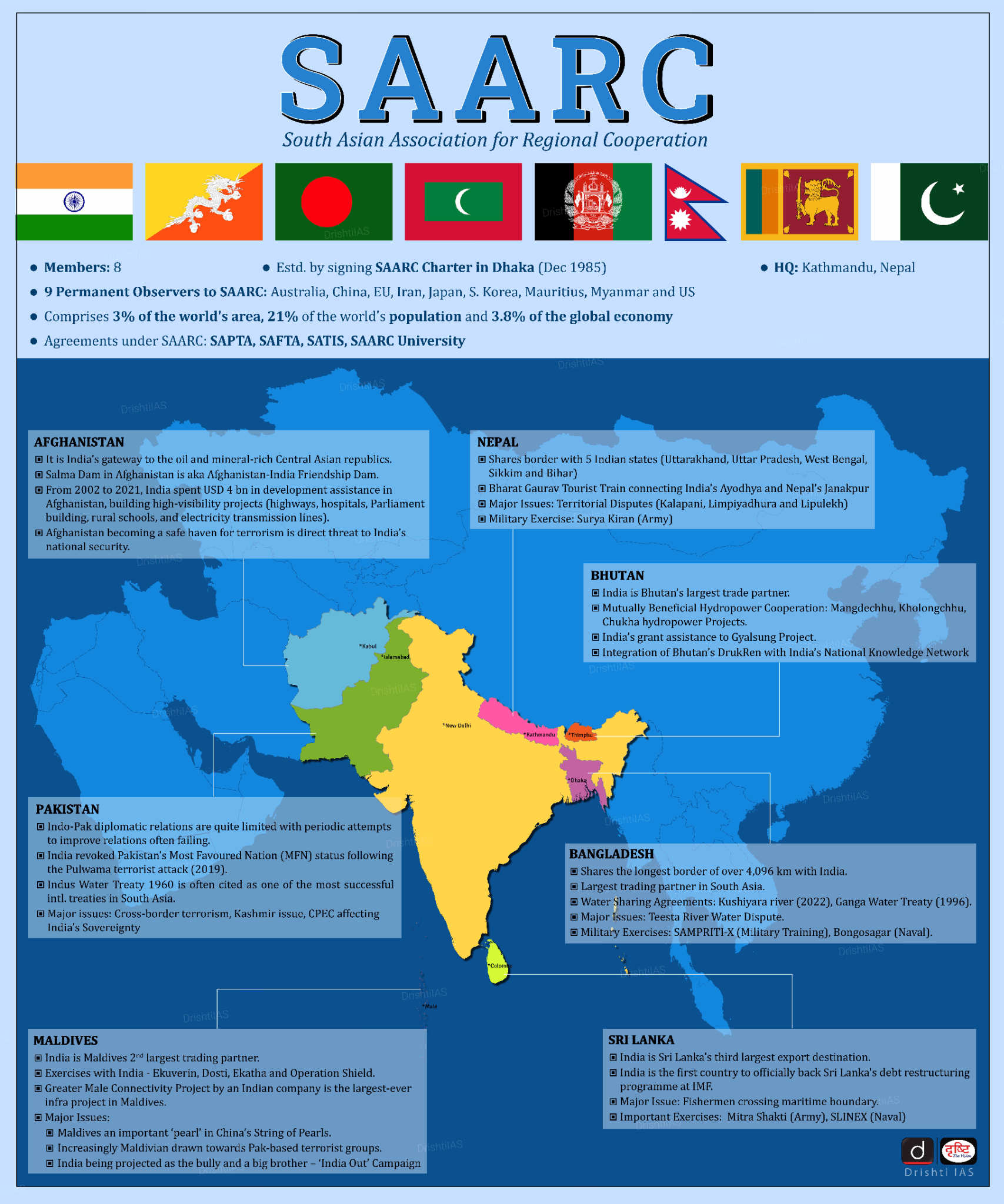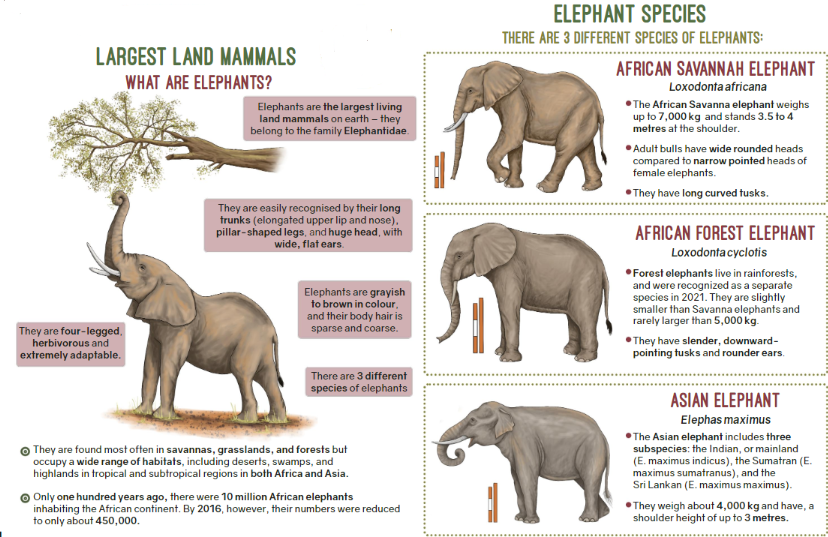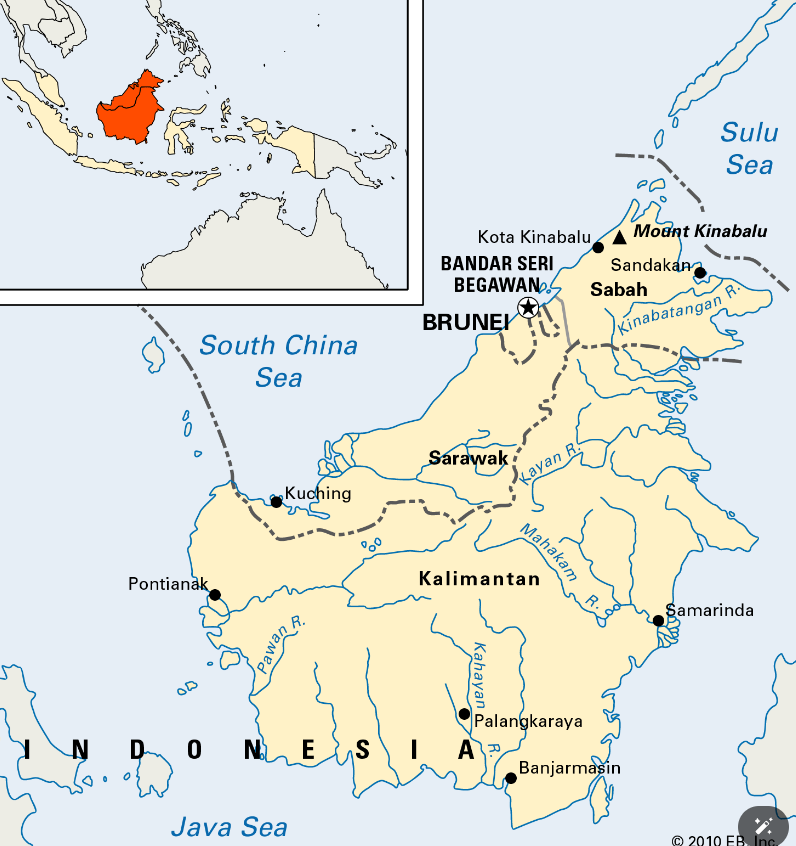US Passed Resolve Tibet Act
For Prelims: China-Tibet Issue, India-China Relations, India-US Relations, Buddhism, Dalai Lama.
For Mains: Effect of Policies & Politics of Countries on India's Interests.
Why in News?
Recently, the US Congress passed the Promoting a Resolution to Tibet-China Dispute Act, also known as the Resolve Tibet Act.
- This legislation aims to promote a peaceful resolution to the Tibet-China dispute according to international law and the United Nations (UN) Charter through peaceful dialogue without preconditions.
What is the Resolve Tibet Act 2024?
- About:
- It is a legislation passed by the United States Congress in June 2024.
- It is the third notable act by the US government regarding Tibet, following the Tibetan Policy Act (2002) and the Tibetan Policy & Support Act (2020).
- Key Provisions:
- It aims to strengthen the US's position on Tibet and pressure China into resuming negotiations with the Dalai Lama.
- The Act aims to enhance US support for Tibet and empower US State Department officials to actively counter disinformation about Tibet from the Chinese government.
- The Act will also push for negotiations "without preconditions" between the Chinese government and the Dalai Lama or his representatives or the democratically elected leaders of the Tibetan community.
- It underlines the Tibetan people's right to self-determination and human rights, noting China's duty as a signatory of international human rights covenants.
- It recognizes and addresses the distinct historical, cultural, religious, and linguistic identity of the Tibetan people.
- It also aims to empower the international community to stand up for justice and peace in Tibet.
- Difference with Earlier Acts:
- Unlike the 2002 act, which recognized China's claim over Tibet, the Resolve Tibet Act directly challenges this claim.
- The 2002 act encouraged dialogue with the Dalai Lama, but only in his capacity as a spiritual leader, not as a political representative. In contrast, this Act urges China to engage in dialogue with the Dalai Lama or his democratically elected representatives, without preconditions.
- The Tibetan Policy & Support Act of 2020 also pushed for constructive dialogue, but the Resolve Tibet Act goes further by stating that these talks should aim to "resolve differences" between the parties.
How is India’s Relation with Tibet?
- The Younghusband Mission (1903-1904): The British military expedition to Tibet, led by Colonel Younghusband, aimed to establish a British presence in the region and counter growing Russian influence.
- This led to a conflict with Tibetan forces, culminating in the British victory and the signing of the Lhasa Convention of 1904.
- Anglo-Russian Convention (1907): This agreement aimed to settle outstanding colonial disputes between Colonial Britain and Russia.
- According to this agreement, two great powers would not negotiate with Tibet, except through the mediation of the Chinese government.
- India's Relationship with Tibet: Despite the Sino-Russian treaty, India maintained close ties with Tibet through the influence of Buddhism.
- The spread of Buddhism from India to Tibet and the presence of influential Buddhist monasteries fostered strong cultural and religious connections between the two regions.
- The Indo-Tibetan Border: The Sino-Indian border dispute, particularly in the Ladakh and Arunachal Pradesh regions, has been a major point of contention between India and China.
- The status of Tibet and its historical relationship with India have been central to this ongoing dispute, with both countries claiming sovereignty over the disputed territories.
- India’s Stand on Tibet: Since 2003, India has recognised Tibet Autonomous Region as part of the People's Republic of China following the signing of the Declaration on Principles for Relations and Comprehensive Cooperation between India and China.
- In 1959, India granted asylum to the Dalai Lama after a failed uprising.
What is the Background of the China-Tibet Dispute?
- Tibet's Independence Claims:
- Tibet is an autonomous region on the Tibetan Plateau, with a distinct culture, language, and religious tradition centred around Tibetan Buddhism.
- In 1913, the 13th Dalai Lama announced Tibet's de facto independence after the fall of the Qing dynasty, claiming Tibet was never a part of China.
- However, successive Chinese governments, including the People's Republic of China (PRC) established in 1949, have consistently claimed sovereignty over Tibet.
- Chinese Invasion and the Seventeen Point Agreement:
- From 1912 to 1949, Tibet was not under the control of any Chinese government, with the Dalai Lama's government ruling the region.
- In 1951, the People's Liberation Army (PLA) of China invaded Tibet, and Tibetan leaders were forced to sign the Seventeen Point Agreement which nominally guaranteed Tibetan autonomy but allowed the establishment of Chinese civil and military headquarters in Lhasa (capital of Tibet).
- The Tibetan people, including the Dalai Lama, have rejected the validity of this agreement, considering it a forced occupation and an act of "cultural genocide."
- 1959 Tibetan Uprising and Aftermath:
- Increasing tensions between Tibet and China led to a major uprising in 1959, during which the Dalai Lama and thousands of Tibetans fled to India, seeking asylum.
- The Tibetan exiles formed a government-in-exile, the Central Tibetan Administration (CTA), based in Dharamshala, India.
- Since the 1959 uprising, China has tightened its control over Tibet, severely restricting freedoms of speech, religion, and press, and engaging in human rights abuses such as forced abortions, sterilisations, and the demographic shift through the influx of ethnic Han Chinese.
- While China has invested in infrastructure development in Tibet, these efforts are widely seen as part of a larger strategy to consolidate its control over the region.
Dalai Lama
- Tradition: The Dalai Lama belongs to the Gelugpa tradition of Tibetan Buddhism, the largest and most influential tradition in Tibet.
- History: There have been only 14 Dalai Lamas in the history of Tibetan Buddhism. The first and second Dalai Lamas received the title posthumously. The current Dalai Lama is Tenzin Gyatso, the 14th in the line.
- Spiritual Significance: Dalai Lamas are believed to be manifestations of Avalokiteshvara (Chenrezig), the Bodhisattva of Compassion and Tibet's patron saint.
- Bodhisattvas are enlightened beings who aspire to achieve Buddhahood to benefit all sentient beings and vow to be reborn to help humanity.
- The process to Choose the Dalai Lama:
- Reincarnation Search: The process of selecting a Dalai Lama involves identifying the reincarnation of the previous Dalai Lama, who serves as the spiritual leader of Tibetan Buddhism. The search typically begins after the passing of the incumbent Dalai Lama.
- High Lamas of the Gelugpa tradition and the Tibetan government are responsible for finding the next Dalai Lama. If multiple candidates are identified, a public ceremony involving the drawing of lots is held to determine the true successor.
- Recognition and Training: The selected child, usually very young, is recognised as the reincarnation of the Dalai Lama and undergoes rigorous spiritual and educational training.
- Role: The Dalai Lama's role includes both spiritual and political leadership in Tibetan Buddhism. The selection process is crucial to Tibetan cultural and religious traditions.
- Duration: The search can take several years; for example, it took 4 years to find the current (14th) Dalai Lama.
- Geographical Scope: The search is generally limited to Tibet. However, the current Dalai Lama has suggested that he might not be reborn or, if he is, it would not be in a country under Chinese rule.
What is the Global Stand on China-Tibet Issue?
- China's Stance: China claims Tibet has been part of its territory since the 13th century and its policies aim to develop the region. It argues Tibet is an autonomous region with significant rights and accuses the Dalai Lama of seeking independence.
- China has expressed concerns over the future selection of the Dalai Lama. It fears that the Dalai Lama's successor might be chosen to challenge its authority in Tibet.
- Support for Tibetan Autonomy/ Independence: Some Western countries, like the US and Canada, have expressed support for Tibetan autonomy and human rights.
- The Central Tibetan Administration (CTA), the Tibetan government-in-exile led by the Dalai Lama, is not recognized by the international community, including India.
- Non-Interference and Neutrality: Many countries, especially those with ties to China, maintain a neutral stance and prioritise diplomatic and economic cooperation with China.
- Neighbouring countries like Nepal and Bhutan take a cautious approach to avoid tensions with China.
- Human Rights Concerns: International organisations including the United Nations (UN) have expressed concerns about human rights abuses in Tibet, including restrictions on religious freedom and cultural suppression.
|
Drishti Mains Question: What are the factors responsible for the ongoing dispute between China and Tibet? Analyze the impact of this dispute on India's strategic interests and suggest a way forward for India's Tibet policy. |
UPSC Civil Services Examination, Previous Year Question (PYQ)
Prelims:
Q1. With reference to Indian history, who among the following is a future Buddha, yet to come to save the world? (2018)
(a) Avalokiteshvara
(b) Lokesvara
(c) Maitreya
(d) Padmapani
Ans: (c)
Q2. The painting of Bodhisattva Padmapani is one of the most famous and oft-illustrated paintings at (2017)
(a) Ajanta
(b) Badami
(c) Bagh
(d) Ellora
Ans: (a)
Mains:
Q. Border management is a complex task due to difficult terrain and hostile relations with some countries. Elucidate the challenges and strategies for effective border management. (2016)
UNODC Report on Illicit Drugs
For Prelims: United Nations Office on Drugs and Crime (UNODC), World Drug Report 2024, Cannabis, NDPS Act, NCB, Non-Resident Indians (NRIs), Golden Crescent and Golden Triangle, National Fund for Control of Drug Abuse, National Action Plan for Drug Demand Reduction
For Mains: Drug: Challenges, Initiatives, Problem of drug abuse and related Initiatives.
Why in News?
Recently, the United Nations Office on Drugs and Crime (UNODC) released its World Drug Report 2024, drawing global attention to escalating concerns in the international drug landscape.
What are the Highlights of the Report?
- Rising Drug Use:
-
In 2022, the number of drug users worldwide reached 292 million, representing a 20% increase over the past decade.
-
- Drug Preference:
-
- Cannabis remains the most popular drug, with 228 million users, followed by Opioids, Amphetamines, Cocaine, and Ecstasy.
- Emerging Threats: The report warns about nitazenes, a new class of synthetic opioids more potent than fentanyl.
- These substances are linked to an increase in overdose deaths, particularly in high-income countries.
- Treatment Gap:
- Out of 64 million people suffering from drug use disorders, only one in 11 receive treatment.
- Gender Disparity in Treatment:
-
The report reveals a significant gender gap in treatment access. Only one in 18 women with drug use disorders receive treatment, compared to one in seven men.
-
- Drug Use In India:
- The number of people becoming addicted to drugs has risen sharply. According to data from the Narcotics Control Bureau (NCB), there are currently around 100 million people in the country addicted to various narcotic substances.
- According to the Ministry of Home Affairs, Uttar Pradesh, Maharashtra, and Punjab are the top three states with the highest number of FIRs registered under the Narcotic Drugs and Psychotropic Substances Act (NDPS Act) in three years between 2019 and 2021
Who are the Major Drug-Producing Regions in the World?
- The Golden Crescent: It comprises Afghanistan, Iran, and Pakistan, a major global hub for opium production and distribution.
-
It affects Indian states like Jammu and Kashmir, Punjab, Himachal Pradesh, Rajasthan, and Gujarat.
-
-
The Golden Triangle: It is located at the intersection of Laos, Myanmar, and Thailand notorious for heroin production (Myanmar produces 80% of global heroin).
- Trafficking routes pass through Laos, Vietnam, Thailand, and India.
What are the Factors Contributing to Drug Abuse in India?
- Poverty, Unemployment, and Escapism: Individuals in lower-income groups use cheap, readily available drugs to temporarily escape harsh realities like poverty, unemployment, and poor living conditions.
- A slum rehabilitation program in Chennai reported that 70% of adult drug users cited poverty-related stress as a key factor.
- Peer Pressure and Social Influences: Teenagers experiment with drugs at parties to fit in or appear cool. Youth emulating celebrities or social media influencers who portray drug use as fashionable.
- A 2023 cybercrime unit investigation uncovered a network using Instagram to advertise pharma parties in Goa, reaching over 100,000 potential attendees.
- Legal System Loopholes: Organized crime syndicates exploit legal system loopholes, such as weak border controls, to smuggle drugs. They often misuse trade routes from Africa and South Asia for drug trafficking purposes.
- In 2023, the Border Security Force reported a 35% increase in drug seizures along the India-Pakistan border, highlighting the ongoing challenges in controlling illicit drug flows through these routes.
What are the Various Challenges For India in Drug Trafficking?
- Border Vulnerabilities and Public Health Risks: The India-Myanmar border, characterized by rough terrain and dense forests, presents security challenges.
- Illicit drug flows through India threaten both national security and public health.
- Socio-Economic Factors: Poverty, unemployment, and illiteracy in the North Eastern regions contribute to local involvement in drug-related criminal activities.
- Some local tribes and residents may participate out of economic necessity or misplaced sympathy.
- Global Drug Supply Hub: The Golden Crescent and Golden Triangle regions collectively meet about 90% of the world's drug demand.
- India's proximity to these areas increases its exposure to drug trafficking.
- Evolving Smuggling Techniques: This technological shift presents new challenges for law enforcement. Recent incidents in Punjab have revealed the use of drones for cross-border drug and weapon smuggling.
-
Emerging Cocaine Market: India has unexpectedly become a popular destination for cocaine, controlled by South American cartels. These cartels have established complex networks involving:
- Non-Resident Indians (NRIs) in countries like Canada, Australia, Singapore, Hong Kong, and various European nations.
- Local drug dealers and gangsters in India.
What is the Narcotic Drugs and Psychotropic Substances Act, of 1985?
- The Act regulates certain operations such as manufacture, transport, and consumption related to narcotic drugs and psychotropic substances.
- Under the Act, financing certain illicit activities such as cultivating cannabis, manufacturing narcotic drugs, or harbouring persons engaged in them is an offence.
- Persons found guilty of this offence will be punished with rigorous imprisonment of at least 10 years - extendable up to 20 years - and a fine of at least Rs.1 lakh.
- It also provides for forfeiture of property derived from, or used in, illicit traffic in narcotic drugs and psychotropic substances.
- It also provides for the death penalty in some cases where a person is a repeat offender.
- The Narcotics Control Bureau was also constituted in 1986 under the Act.
What are the Initiatives Taken to Tackle Drug Abuse in India?
- Project Sunrise: It was launched by the Ministry of Health and Family Welfare in 2016, to tackle the rising HIV prevalence in north-eastern states in India, especially among people injecting drugs.
- Nasha Mukt Bharat: The government has also announced the launch of the ‘Nasha Mukt Bharat’, or Drug-Free India Campaign which focuses on community outreach programs.
- Narco-Coordination Centre: The Narco-Coordination Centre (NCORD) was constituted in 2016 and the “Financial Assistance to States for Narcotics Control” scheme was revived.
- Seizure Information Management System: The Narcotics Control Bureau has been provided funds for developing new software like the Seizure Information Management System (SIMS) which will create a complete online database of drug offenses and offenders.
- National Drug Abuse Survey: The government is also conducting a National Drug Abuse Survey to measure trends of drug abuse in India through the Ministry of Social Justice & Empowerment with the help of the National Drug Dependence Treatment Centre of AIIMS.
Way Forward
- Comprehensive Strategy: Prevention, treatment, and law enforcement as recommended by UNODC for community-based programs to raise awareness.
- Prevention:
- A national review and consultation organized by the National Commission for Protection of Child Rights (NCPCR) and Narcotics Control Bureau (NCB) focused on a 'Joint Action Plan to Prevent Drug and Substance Abuse and Combat Illicit Trafficking'.
- Media campaigns targeting vulnerable populations.
- Early intervention strategies in schools and workplaces
- Treatment:
- Equipping people with knowledge and skills to resist drug use. These programs go beyond simple "Just Say No" campaigns and include:
- Accurate information about drug effects and risks.
- Coping strategies for peer pressure and stress.
- Decision-making skills and self-esteem building.
- Providing comprehensive recovery support services.
- Addressing the stigma associated with seeking help for drug abuse
- Equipping people with knowledge and skills to resist drug use. These programs go beyond simple "Just Say No" campaigns and include:
- Law Enforcement:
- Strengthening border security to intercept drug shipments.
- Improving intelligence sharing between agencies (Interpol) and countries (Golden Crescent and the Golden Triangle).
- Targeting high-level drug traffickers and their financial networks.
- Prevention:
- Use of Technology:
- Develop an online reporting system where citizens can report drug abuse and trafficking activities. Big Data and analytics and AI to identify and track drug trafficking networks.
- The new portal 'Prahari' will be launched to conduct quarterly activities for awareness of drugs and substance abuse in schools.
- Develop an online reporting system where citizens can report drug abuse and trafficking activities. Big Data and analytics and AI to identify and track drug trafficking networks.
- Humanitarian Approach:
- In response to the limitations of punitive measures in addressing drug-related cases, there is a need to amend legislation to adopt more reformative approaches.
- Viewing drug use through a lens of public health and human rights promotes understanding and empathy towards individuals affected by addiction.
- Redirecting resources from incarceration towards rehabilitation can lead to better outcomes for individuals and communities.
|
Drishti Mains Questions: How do drug trafficking challenges intersect with border management issues, particularly in regions like India, and what strategies are being employed to address these complexities? |
UPSC Civil Services Examination, Previous Year Questions (PYQs)
Prelims
Q1. Consider the following statements: (2019)
- The United Nations Convention against Corruption (UNCAC) has a ‘Protocol against the Smuggling of Migrants by Land, Sea and Air’.
- The UNCAC is the ever-first legally binding global anti-corruption instrument.
- A highlight of the United Nations Convention against Transnational Organized Crime (UNTOC) is the inclusion of a specific chapter aimed at returning assets to their rightful owners from whom they had been taken illicitly.
- The United Nations Office on Drugs and Crime (UNODC) is mandated by its member States to assist in the implementation of both UNCAC and UNTOC.
Which of the statements given above is correct?
(a) 1 and 3 only
(b) 2, 3 and 4 only
(c) 2 and 4 only
(d) 1, 2, 3 and 4
Ans: (c)
Mains
Q. India’s proximity to two of the world’s biggest illicit opium-growing states has enhanced her internal security concerns. Explain the linkages between drug trafficking and other illicit activities such as gunrunning, money laundering and human trafficking. What counter-measures should be taken to prevent the same? (2018)
Amendments Proposed in MSME Act
For Prelims: Micro, Small, and Medium Enterprises, International MSME Day, Udyam Portal
For Mains: Significance of the MSME sector for India's economic growth, Role of digitalisation and technology adoption in MSMEs, Role of MSMEs in rural development
Why in News?
Recently, on the occasion of International MSME Day (27th June), 2024, the Ministry of Micro, Small & Medium Enterprises (MSME) organised the 'Udyami Bharat-MSME Day' event and proposed amendment to MSME Development Act, 2006 to improve dispute resolution for delayed payments and address the changing needs of the MSME sector.
- The event witnessed the launch of several initiatives by the Union Minister for MSME, including the proposed upgradation of the Samadhan Portal, proposed amendments in the MSME Development Act, 2006, the Team Initiative and the Yashasvini campaign.
What are the Key Facts About MSME?
- About:
- MSME stands for Micro, Small and Medium Enterprises. These are businesses that produce, process, and preserve goods and commodities.
- Classification:
- MSME Regulation in India:
- The Ministry of Small-Scale Industries and the Ministry of Agro and Rural Industries were merged in 2007 to form the Ministry of Micro, Small, and Medium Enterprises.
- This ministry develops policies, facilitates programs, and monitors implementation to support MSMEs and aid in their growth.
- The Micro, Small, and Medium Enterprises Development Act of 2006 addresses various issues affecting MSMEs, establishes a National Board for MSMEs, defines the concept of "enterprise," and empowers the Central Government to enhance MSME competitiveness.
- The Ministry of Small-Scale Industries and the Ministry of Agro and Rural Industries were merged in 2007 to form the Ministry of Micro, Small, and Medium Enterprises.
- Significance of the MSME Sector:
-
Global:
- According to the United Nations data, MSMEs account for up to 90% of businesses, over 60% to 70% of jobs worldwide, and half of global GDP.
- India:
- GDP Contribution and Employment Generation: MSMEs currently contribute approximately 30% to India's Gross Domestic Product (GDP), playing a crucial role in driving economic growth.
- As per the data of Udyam registration portal, more than 46 million MSMEs (second only to China's 140 million) and over 200 million jobs are registered with the MSME Ministry.
- Export Promotion: Currently MSMEs contribute nearly 45% of India's total exports.
- The Indian handicraft sector, which is dominated by small-scale artisans and enterprises, has a global market and generates significant export revenue for the country.
- Contribution to Manufacturing Output: MSMEs contribute significantly to the country's manufacturing output, particularly in sectors like food processing, engineering, and chemicals.
- Rural Industrialization and Inclusive Growth: MSMEs play a pivotal role in driving rural industrialisation and promoting inclusive growth.
- The Khadi and Village industries sector, consisting of small-scale units, has been instrumental in providing employment opportunities in rural areas and empowering local communities.
- Innovation and Entrepreneurship: The MSME sector fosters innovation and entrepreneurship, as it is often easier for small businesses to adapt to changing market conditions and introduce new products or services.
- GDP Contribution and Employment Generation: MSMEs currently contribute approximately 30% to India's Gross Domestic Product (GDP), playing a crucial role in driving economic growth.
-
International MSME Day 2024
- It is observed on 27th June annually to recognise the significance of MSMEs and their contribution to the economy.
- The theme of MSME Day 2024:
- The theme for MSME Day 2024 is “Leveraging Power and Resilience of Micro-, Small and Medium-sized Enterprises (MSMEs) to Accelerate Sustainable Development and Eradicate Poverty in Times of Multiple Crises.”
- History and Significance:
- In April 2017, the United Nations designated the 27th June as Micro, Small, and Medium-sized Enterprises Day.
- The day aims to enhance national capacities for unleashing the full potential of MSMEs in achieving Sustainable Development Goals.
What are the Key Amendments Proposed in MSME Development Act, 2006?
- MSME Development Act, 2006: It provides a framework for the promotion and development of micro, small, and medium enterprises (MSMEs) in the country.
- Objectives:
- Facilitating the promotion and development of MSMEs.
- Enhancing the competitiveness of MSMEs.
- Providing easy access to credit, marketing assistance, and other support services.
- Promoting entrepreneurship and skill development.
- Objectives:
- Key Amendments Proposed:
- Faster Payment Resolutions: The Samadhan portal is proposed to upgrade from a grievance tracker to a full-fledged online dispute resolution platform for MSMEs.
- This empowers MSMEs to file complaints, receive responses, and participate in mediation all online, expediting payments.
- Strengthened MSME Representation: The National Board for MSME will include representatives from all State Secretaries, fostering better policymaking that reflects ground realities and addresses MSME challenges across India.
- Modernising the Act: The 2006 MSME Act requires updates to address contemporary issues like persistent delayed payments and the evolving support needs of MSMEs. Amendments aim to create a more responsive legal framework for their growth.
- Faster Payment Resolutions: The Samadhan portal is proposed to upgrade from a grievance tracker to a full-fledged online dispute resolution platform for MSMEs.
What are the Key Initiatives Announced by the Ministry of MSME?
- MSME Trade Enablement & Marketing (TEAM) Initiative: It aims to facilitate the onboarding of 5 lakh micro and small enterprises onto the Open Network for Digital Commerce (ONDC).
- The government will provide financial assistance for onboarding, cataloguing, account management, logistics, packaging material, and design.
- Half of the beneficiary MSEs will be women-owned enterprises.
- Yashasvini Campaign: This is a series of mass awareness campaigns for formalising women-owned informal micro enterprises and providing capacity building, training, handholding, and mentorship to women-owned enterprises.
- The campaigns will be organised by the Ministry of MSME in collaboration with other Central Ministries/Departments, State Governments, and Women Industry Associations, focusing on Tier 2 and 3 cities.
- 6 Pillars for the Government's MSME Initiatives:
- Building a Stronger Foundation: This pillar focuses on formalising businesses and ensuring easier access to credit, vital for the growth and stability of MSMEs.
- Expanding Market Reach: The government aims to increase access to domestic and international markets for MSMEs, along with encouraging e-commerce adoption to expand their reach further.
- Technological Transformation: This pillar emphasises leveraging modern technology to boost productivity and efficiency within the MSME sector.
- Skilling the Workforce: Enhancing skill levels and promoting digitalisation in the service sector are crucial for MSMEs to keep pace with the evolving market.
- Going Global with Tradition: The government will support traditional industries like Khadi, Village, and Coir to help them compete in the global marketplace.
- Empowering Entrepreneurs: This pillar prioritises fostering enterprise creation among women and artisans, promoting inclusive growth within the MSME sector.
What are the Recent Government Initiatives Related to MSMEs?
What are the Challenges Faced by MSMEs?
- Limited Access to Finance and Credit: MSMEs often struggle to obtain formal financing and credit facilities, hindering their growth and expansion.
- Only 16% of MSMEs have access to formal credit, leading many to rely on informal sources at higher costs.
- Technological Deficiency: There is a significant lack of technological advancements and limited digital infrastructure, which restricts their ability to innovate and compete effectively.
- Limited access to research and development facilities and challenges in adopting Industry 4.0 technologies further hinder their competitiveness.
- Market Access and Competition: MSMEs face limited market access and intense competition from large-scale enterprises, which undermines their market share and profitability.
- Skilled Labour Shortage: Acquiring skilled labour and managing talent is a persistent issue, affecting the quality and efficiency of operations.
- A report by Assocham estimates that India has a skills gap of 23 million workers, making it difficult for MSMEs to find qualified employees, which impacts productivity and innovation.
- Economic Vulnerability: MSMEs are particularly vulnerable to economic downturns and market fluctuations, which can significantly impact their stability and growth prospects.
- During the Covid-19 pandemic, around 21% of MSMEs in India permanently closed due to the economic impact, making them more vulnerable to economic downturns.
- Raw Material Shortage: MSMEs struggle with fluctuating raw material prices and limited financial capacity for bulk purchasing.
-
This is particularly challenging for small textile units, which often face difficulties with cotton price volatility, impacting their profit margins and competitiveness.
-
- Issues With Current Litigation System: The expensive legal process makes it hard for small businesses to seek justice.
- The current system takes too long to resolve disputes, worsening the financial difficulties of small businesses.
- The Samadhan portal only provides information for analysis and does not help directly resolve disputes.
Way Forward
- Financial Empowerment and Access: Enhance access to formal credit through targeted schemes, collateral relaxation, and promoting alternative financing options like venture capital, angel investors, and peer-to-peer lending platforms.
- Digital Transformation and Market Expansion: Impart digital literacy, and technical skills, facilitate e-commerce integration, subsidise investments in digital infrastructure, and establish linkages with large enterprises for subcontracting.
- Regulatory Reforms and Skilling: Simplify regulations, implement single window clearance systems, conduct regulatory impact assessments, launch targeted skill development programs aligned with industry needs, and promote entrepreneurship education at all levels.
- Establish mentorship programs connecting successful entrepreneurs with inspiring MSME owners.
- Infrastructure, Risk Management, and Policy Awareness: Investing in developing reliable power, transportation, and communication infrastructure for MSMEs to thrive.
- Develop risk management strategies like insurance schemes and encourage product/market diversification to improve resilience.
- Global Competitiveness and Quality Enhancement: Promoting the adoption of quality management systems, and developing export-oriented MSME clusters can enhance global competitiveness and quality.
- Zero Defect Zero Effect (ZED) certification scheme, for example, has helped MSMEs improve quality and reduce environmental impact.
|
Drishti Mains Question: Analyse the challenges faced by MSMEs in India and evaluate the government's initiatives in addressing these challenges. |
UPSC Civil Services Examination, Previous Year Question (PYQ):
Prelims:
Q.1 What is/are the recent policy initiative(s)of Government of India to promote the growth of the manufacturing sector? (2012)
- Setting up of National Investment and Manufacturing Zones
- Providing the benefit of ‘single window clearance’
- Establishing the Technology Acquisition and Development Fund
Select the correct answer using the codes given below:
(a) 1 only
(b) 2 and 3 only
(c) 1 and 3 only
(d) 1, 2 and 3
Ans: (d)
Q.2. Which of the following can aid in furthering the Government’s objective of inclusive growth? (2011)
- Promoting Self-Help Groups
- Promoting Micro, Small and Medium Enterprises
- Implementing the Right to Education Act
Select the correct answer using the codes given below:
(a) 1 only
(b) 1 and 2 only
(c) 2 and 3 only
(d) 1, 2 and 3
Ans: (d)
Q3. Consider the following statements with reference to India : (2023)
- According to the ‘Micro, Small and Medium Enterprises Development (MSMED) Act, 2006, the ‘medium enterprises’ are those with investments in plant and machinery between `15 crore and `25 crore.
- All bank loans to the Micro, Small and Medium Enterprises qualify under the priority sector.
Which of the statements given above is/are correct?
(a) 1 only
(b) 2 only
(c) Both 1 and 2
(d) Neither 1 nor 2
Ans: (b)
Mains:
Q.1 “Industrial growth rate has lagged behind in the overall growth of Gross-Domestic-Product(GDP) in the post-reform period” Give reasons. How far are the recent changes in Industrial Policy capable of increasing the industrial growth rate? (2017)
Q.2 Normally countries shift from agriculture to industry and then later to services, but India shifted directly from agriculture to services. What are the reasons for the huge growth of services vis-a-vis the industry in the country? Can India become a developed country without a strong industrial base? (2014)
New Criminal Laws Come into Force
Why in News?
Recently enacted three new criminal laws Bharatiya Nyaya Sanhita (BNS), Bharatiya Nagarik Suraksha Sanhita (BNSS), and Bharatiya Sakshya Adhiniyam (BSA) are set to take effect from 1st July 2024, replacing the colonial-era Indian Penal Code (IPC), Code of Criminal Procedure (CrPC) and Indian Evidence Act.
What are the Key Highlights of the New Criminal Laws?
- Objective: The new laws aim to replace colonial-era punishments with a justice-focused approach, integrating technological advancements in police investigations and court procedures.
- New Offences: New offences include terrorism, mob lynching, organized crime, and enhanced punishments for crimes against women and children.
- Steps for Smooth Transition:
- States are free to bring in their own amendments to some provisions of the Bharatiya Nagrik Suraksha Sanhita (BNSS).
- The Bharatiya Nyaya Sanhita (BNS) may also be amended soon to incorporate a section on sexual crimes against men and transgender persons.
- For the time being police officers are being asked to invoke other allied sections under the BNS, such as wrongful confinement and physical hurt, if they get such complaints until an amendment is brought to correct this anomaly.
- The IPC and CrPC will run concurrently along with the new laws as several cases are still pending in courts and some crimes that took place before 1st July 2024 that are reported later will have to be registered under the IPC.
- First information reports (FIRs) can now be filed online through the Crime and Criminal Tracking Network Systems (CCTNS), allowing e-FIRs and zero FIRs in multiple languages without needing to visit a police station.
- Training and hand-holding have been done for all States to help them adapt to the new system.
- While the Home Ministry is testing eSakshya, a mobile app for police to record and upload crime scene evidence, various states have developed their own systems based on their capabilities.
- For example, the Delhi Police have developed an e-pramaan application.
- Key Points in New Laws:
- Introduces community service as punishment for petty offences.
- A terrorist act defined as one intending or likely to threaten India's unity, integrity, sovereignty, security, or economic security, or acts intended or likely to strike terror among the people.
- Mob lynching now punishable by death or life imprisonment if committed by five or more on grounds such as race, caste, community, sex, place of birth, language, personal belief.
- There will be trial in absentia of fugitive criminals.
- Summary trials now cover cases where the punishment is up to 3 years, aiming to resolve more than 40% of cases in sessions courts.m
- Videography compulsory during search and seizure. No charge sheet valid without such recording.
- A first-time offender who has served a third of the jail term will be released on bail by the court.
- Forensic experts should be used in every case where the punishment includes seven or more years in jail.
- Bharatiya Nyaya Sanhita, 2023:
- Bharatiya Sakshya Act, 2023:
- Bharatiya Nagarik Suraksha Sanhita, 2023:
Related Initiatives Taken by Government
UPSC Civil Services Examination, Previous Year Question (PYQ)
Mains
Q. Mob violence is emerging as a serious law and order problem in India. By giving suitable examples, analyze the causes and consequences of such violence. (2015)
Q. We are witnessing increasing instances of sexual violence against women in the country. Despite existing legal provisions against it, the number of such incidences is on the rise. Suggest some innovative measures to tackle this menace. (2014)
International Asteroid Day
Why in News?
International Asteroid Day is observed on 30th June to commemorate the Tunguska event in 1908 and aims to raise awareness about the threat of asteroid impacts.
What is the Tunguska Event?
- About Event:
- The Tunguska event was caused by an asteroid explosion in Siberia, flattened 80 million trees over an area of 830 square miles.
- The explosion resulted in minimal human casualties due to the remote location and the shock wave was felt hundreds of miles away.
- The Tunguska event was caused by an asteroid explosion in Siberia, flattened 80 million trees over an area of 830 square miles.
- United Nations Recognition:
- International Asteroid Day was designated by the United Nations in 2016 to promote global efforts in planetary defence.
- National Aeronautics and Space Administration (NASA) stated that a collision of Near-Earth Objects (NEOs) with Earth is the only natural disaster humanity could completely prevent.
- What are Initiatives Related to Monitoring of Near-Earth Objects:
- Double Asteroid Redirection Test (DART) Mission
- ESA’s Hera Mission
- NETRA Project & Space Junk
- Apophis Mission:
- Indian Space Research Organisation (ISRO) expressed interest in participating in the international mission to study the asteroid Apophis.
- Apophis is a near-earth object (NEO) and it is believed that it may hit Earth in 2029, however, NASA recently dispelled such reports.
- It will pass by Earth at a distance of 38,012 kilometres on 14th April 2029
- This event will be visible to observers in the Eastern Hemisphere without any telescopes or binoculars.
- The Apophis was first discovered in 2004. It measures 335 metres in size.
- It will be moving at a speed of 29.98 KM per second.
Note
- The planet bears evidence of past impacts that had catastrophic results.
- The Chicxulub crater in Mexico, caused by an asteroid impact 65 million years ago, is linked to the extinction of the dinosaurs and 75% of Earth's species.
- The Meteor Crater in Arizona and the Chelyabinsk event in Russia in 2013..
What is Asteroids?
- About:
- Asteroids, also referred to as minor planets, are remnants from the early stages of our solar system's formation approximately 4.6 billion years ago.
- They predominantly exhibit irregular shapes, though some display nearly spherical forms.
- Many asteroids are accompanied by small moons, with some even having two moons.
- Additionally, binary asteroids consist of two similar-sized rocky bodies orbiting each other, and there are also triple asteroid systems.
- Categorization of Asteroids:
- Main Asteroid Belt: This region, located between Mars and Jupiter, houses the majority of known asteroids.
- Trojans: These asteroids share an orbit with a larger planet, residing near stable points called Lagrangian points (L4 and L5), where the gravitational forces of the Sun and the planet are balanced.
- This configuration prevents collisions with the larger planet.
- Near-Earth Asteroids (NEAs): These asteroids have orbits that approach Earth's orbit. Those that intersect Earth's orbital path are specifically termed Earth-crossers.
UPSC Civil Services Examination, Previous Year Questions (PYQs)
Prelims
Q. What is the difference between asteroids and comets? (2011)
- Asteroids are small rocky planetoids, while comets are formed of frozen gases held together by rocky and metallic material.
- Asteroids are found mostly between the orbits of Jupiter and Mars, while comets are found mostly between Venus and Mercury.
- Comets show a perceptible glowing tail, while asteroids do not.
Which of the statements given above is/are correct?
(a) 1 and 2 only
(b) 1 and 3 only
(c) 3 only
(d) 1, 2 and 3
Ans: (b)
30th anniversary of ISA
Why in News?
Recently, the International Seabed Authority (ISA), an agency under the United Nations Convention on the Law of the Sea (UNCLOS), celebrated its 30th anniversary.
- It was established to oversee the exploration and utilization of non-living marine resources in international waters.
What are the Key Facts About ISA?
- About ISA:
- It is an autonomous international organisation established under the 1982 United Nations Convention on the Law of the Sea (UNCLOS) and the 1994 Agreement relating to the implementation of Part XI of the UNCLOS.
- Headquarters: Kingston, Jamaica.
- Members: 168 Member States (including India) and the European Union.
- The area under its jurisdiction covers around 54% of the total area of the world's oceans.
- ISA ensures effective protection of the marine environment from the harmful effects of deep-seabed activities.
- Mandate:
- Regulating the conduct of all exploration activities and exploitation of deep-sea minerals.
- Protection of the marine environment from harmful effects of deep seabed-related activities.
- Encourage marine scientific research.
-
India and ISA:
- On 18th January 2024, India submitted two applications for exploration in the international seabed area of the Indian Ocean.
- Polymetallic sulphides in the Indian Ocean Ridge (Carlsberg Ridge).
- Cobalt-rich ferromanganese crusts of the Afanasy-Nikitin Seamount in the Central Indian Ocean.
- Currently, India holds two contracts for exploration in the Indian Ocean.
- Polymetallic nodules and sulphides in the Central Indian Ocean Basin and Ridge.
- On 18th January 2024, India submitted two applications for exploration in the international seabed area of the Indian Ocean.
United Nations Convention on the Law of the Sea (UNCLOS)
- The ‘Law of the Sea Treaty’, formally known as the United Nations Convention on the Laws of the Sea (UNCLOS) was adopted in 1982 to establish jurisdictional limits over the ocean areas.
- The convention defines a distance of 12 nautical miles from the baseline as the Territorial Sea limit and a distance of 200 nautical miles distance as the Exclusive Economic Zone limit.
- It provides for technology and wealth transfer from developed to underdeveloped nations and requires parties to implement regulations and laws to control marine pollution.
- India became a signatory to the UNCLOS in 1982.
- UNCLOS created three new institutions:
- International Tribunal for the Law of the Sea: It is an independent judicial body established by UNCLOS to adjudicate disputes arising out of the convention.
- International Seabed Authority: It is a UN body set up to regulate the exploration and exploitation of marine non-living resources of oceans in international waters.
- Commission on the Limits of the Continental Shelf: It facilitates the implementation of the United Nations Convention on the Law of the Sea (the Convention) in respect of the establishment of the outer limits of the continental shelf beyond 200 nautical miles.
Read more: India Joins Sri Lanka in Seabed Mining Race
UPSC Civil Services Examination, Previous Year Question(PYQ)
Prelims:
Q. Consider the following statements:
- The Global Ocean Commission grants licences for seabed exploration and mining in international waters.
- India has received licences for seabed mineral exploration in international waters
- ‘Rare earth minerals’ are present on the seafloor in international waters.
Which of the statements given above are correct?
(a) 1 and 2 only
(b) 2 and 3 only
(c) 1 and 3 only
(d) 1, 2 and 3
Ans: (b)
Revised Currency Swap Framework for SAARC
Why in News?
Recently, the Reserve Bank of India (RBI), has decided to put in place a revised framework for currency swap arrangements for SAARC (South Asian Association for Regional Cooperation) countries for the period 2024 to 2027.
What is a Currency Swap Agreement?
- About:
- A currency swap agreement between two countries is a contract to exchange currencies with predetermined terms and conditions for liquidity support.
- Central banks and Governments engage in currency swaps with foreign counterparts to meet short-term foreign exchange liquidity requirements or to ensure adequate foreign currency to avoid the Balance of Payments (BOP) crisis till longer arrangements can be made.
- These swap operations carry no exchange rate or other market risks as transaction terms are set in advance.
- RBI’s Framework for Swap Facilities for SAARC:
- The SAARC currency swap facility first came into operation on 15th November 2012, to provide a backstop line of funding for short-term foreign exchange liquidity requirements or balance of payment crises of the SAARC countries till longer-term arrangements are made.
- The RBI can offer a swap arrangement within the overall corpus of USD 2 billion.
- The swap can be made in US dollars, euro or Indian rupees. The framework provides certain concessions for swap in the Indian rupee.
- The facility will be available to all SAARC member countries, subject to their signing the bilateral swap agreements.
- Changes in New Framework:
-
Under the framework for 2024-27, a separate INR (Indian Rupee) swap window has been introduced with various concessions for swap support in Indian Rupee.
-
The total corpus of the rupee support is Rs. 250 billion.
-
-
The RBI will continue to offer swap arrangements in USD and Euro under a separate US Dollar/ Euro swap window with an overall corpus of USD 2 billion.
-
-
Other Bilateral Currency Swap Agreements:
South Asian Association for Regional Cooperation (SAARC)
- Establishment: SAARC was established with the signing of the SAARC Charter in Dhaka (Bangladesh) on 8th December 1985.
- Member States: Afghanistan, Bangladesh, Bhutan, India, Maldives, Nepal, Pakistan and Sri Lanka.
- Secretariat: Kathmandu (Nepal)
- Objective: To promote the welfare of the people of South Asia, to improve their quality of life, and accelerate economic growth, among other things
UPSC Civil Services Examination, Previous Year Questions (PYQs)
Prelims
Q. In the context of India, which of the following factors is/are contributor/contributors to reducing the risk of a currency crisis? (2019)
- The foreign currency earnings of India’s IT sector
- Increasing the government expenditure
- Remittances from Indians abroad
Select the correct answer using the code given below:
(a) 1 only
(b) 1 and 3 only
(c) 2 only
(d) 1, 2 and 3
Ans: (b)
Mains:
Q. “Increasing cross-border terrorist attacks in India and growing interference in the internal affairs of several member-states by Pakistan are not conducive for the future of SAARC (South Asian Association for Regional Cooperation).” Explain with suitable examples. (2016)
Glucagon Manufacturing in PLI Scheme
- Recently, the government decided to manufacture a Glucagon-like peptide receptor agonist (GLP-1RA) drug in India under the Production Linked Incentive (PLI) scheme from 2026.
- GLP-1RA is a class of anti-diabetic drugs which are also used for weight loss.
- Apart from GLP-1RA, investors are planning to make other drugs like Ozempic (for diabetes), and Wegovy (for obesity) at the site and the PLI scheme will provide manufacturing avenues in India.
- The PLI scheme is an ambitious central scheme to scale up domestic manufacturing capability, accompanied by higher import substitution and employment generation.
- Launched in March 2020, the scheme at present covers 14 sectors.
- Under the scheme, Domestic and Foreign companies receive financial rewards for manufacturing in India, based on a percentage of their revenue over up to five years.
Read more: Production Linked Incentive Scheme
Mainland Serow
Recently, the Assam Forest Department and conservationists have documented the first photographic evidence of the Mainland Serow (Capricornis sumatraensis thar), in western Assam’s Raimona National Park.
Mainland Serow:
- It is a mammal that appears somewhere between a goat and an antelope.
- According to the International Union for Conservation of Nature (IUCN), the mainland serow inhabits areas at altitudes of 200-3000 metres.
- The animal habitat is across the India-Bhutan border in Phibsoo Wildlife Sanctuary and the Royal Manas National Park in Bhutan.
- There are three other species of the animal Japanese serow, red serow (found in eastern India, Bangladesh, and Myanmar), and Taiwan or Formosan serow.
- Conservation Status:
-
IUCN Red List: Vulnerable
-
CITES: Appendix I
-
The Wildlife Protection Act, 1972: Schedule I
-
Read more: Himalayan Serow
National Financial Reporting Authority
Recently, the National Financial Reporting Authority (NFRA) has started inspection of the audit arms of Big-5 firms.
- Big-5 firms include BSR & Co, Deloitte Haskins & Sells, SRBC & Co, Price Waterhouse Chartered Accountants and Walker Chandiok & Co.
- The "audit arms" are responsible for conducting audits of the company's financial statements.
- Its early reports suggest that most of these firms have already taken steps to segregate their audit and non-audit services.
- The report highlighted the need for areas of weaknesses to be treated as potential areas for improvement.
- National Financial Reporting Authority (NFRA):
Read more: National Financial Reporting Authority
Borneo Elephants
Recently, Borneo elephants (Elephas maximus Borneensis) have been classified as 'Endangered' on the IUCN Red List.
- Only about 1,000 Borneo elephants remain, with 400 of them being breeding adults.
- The main threat to them is human-elephant conflict, poaching, and habitat loss caused by logging and oil palm plantations, leading to the loss of about 60% of their forest habitat in the last 4 decades.
Bornean Elephants:
- It is a subspecies of the Asian elephant (Elephas maximus) that is native to the island of Borneo.
- They are primarily located in Sabah, Malaysia and Kalimantan, Indonesia.
- They are genetically distinct from other Asian elephant populations, characterised by their smaller size and unique skull shape.
- They are herbivores, and live in family groups led by a matriarch and typically found near water sources such as rivers.
-
Protection Status of Asian Elephants:
- IUCN Red List Status: Endangered.
- CITES: Appendix I.
- Wildlife (Protection) Act, 1972: Schedule I.
- Borneo is the world’s 3rd largest island, shared by Malaysia and Brunei in the north and Indonesia in the south.
Read more: IUCN Red List Update 2023, World Elephant Day 2023


